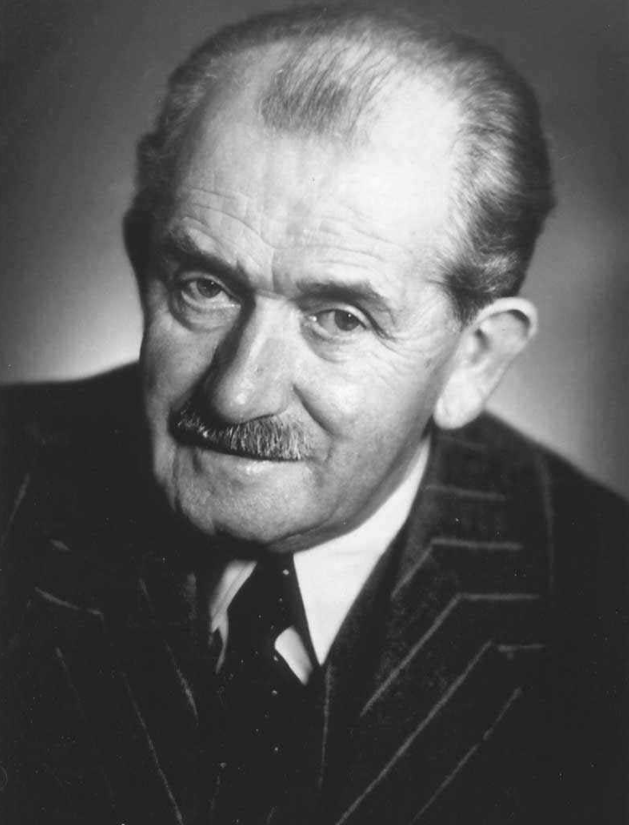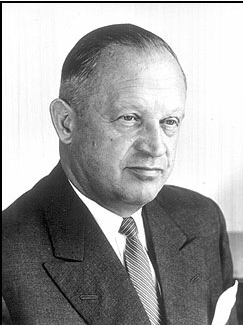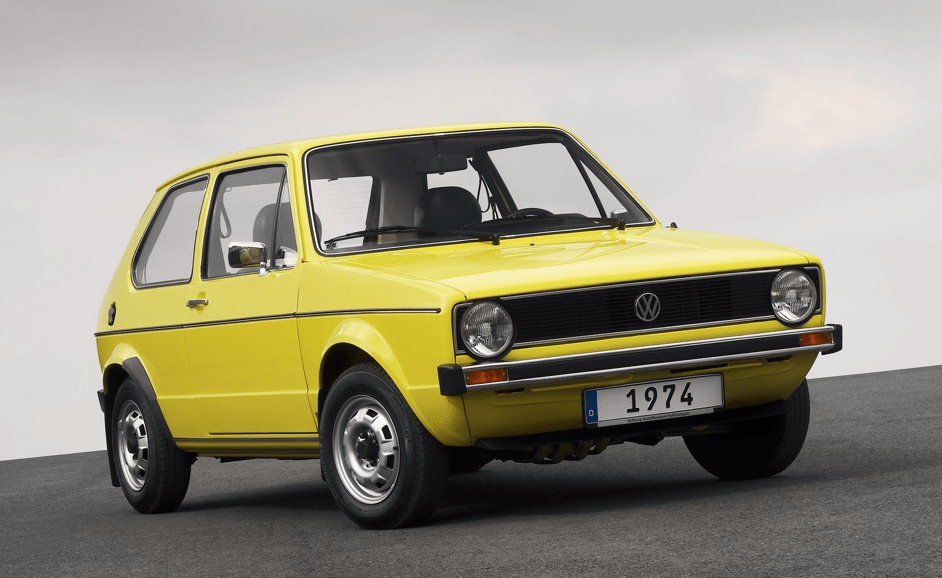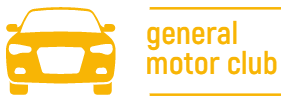The history of the Volkswagen Group began in the fall of 1933 in one of the rooms of the Kaiserhof Hotel in Berlin. There were three interlocutors: Adolf Hitler, Jacob Werlin of Daimler-Benz, and Ferdinand Porsche. Hitler made a demand: to create a strong and reliable car for the German people, costing no more than 1000 reichsmarks. Also, the car should be assembled at the new factory, the embodiment of the new Germany. He made a sketch on a piece of paper, indicated the main points of the program and asked to name the designer who would be responsible for the fulfillment of the governmental order. Jakob Werlin proposed Ferdinand Porsche.
The future car was called “Volks-Wagen” (“People’s Car”).

On January 17, 1934, Ferdinand Porsche sent drawings of a prototype of the “people’s car” based on the previously developed Porsche Typ 60 to the German Reich Chancellery.
In June 1934, a contract was signed between the RDA (German Reichsverband der Automobilindustrie) or “German Automobile Association”, and “Dr. Ing. h.c. F. Porsche GmbH” (Konstruktionen und Beratungen für Motoren und Fahrzeugbau), Ferdinand Porsche’s company, to develop three prototypes of a “people’s car. The monthly budget for the project was 20,000 reichsmarks, with a time limit of 10 months for all development. The main features to be considered were as follows: 5 seats, track width – 1.200 mm, axle spacing – 2.500 mm, maximum power – 26 hp, maximum rpm – 3.500 rpm, unladen weight – 650 kg, selling price – 1.550 reichsmarks, maximum speed – 100 km/h, maximum uphill slope – 30%, average fuel consumption – 8 liters per 100 km.
Despite the pre-existing design and experience, the need to meet the deadline delayed the work for two years. The prototypes were ready only in September 1936: a two-door V1, a convertible V2 (by order of Hitler), and a four-door V3. 50,000 kilometers of test driving did not reveal any serious deficiencies in the cars, and Porsche was given an order for the next 30 prototypes, which were produced at the Daimler-Benz plant. Testing of new prototypes was entrusted to the DAF (German Deutsche Arbeitsfront) (German Labor Front), the Nazi trade union organization. And the control of testing and making a final decision on its results was carried out directly by members of the SS (German SS or Schutzstaffel).
On May 28, 1937, the company “Gesellschaft Zur Vorbereitung des Deutschen Volkswagens mbH” (“Limited Liability Company for the preparation of the German People’s Car”) was founded, and, later, on September 16, 1938, it was renamed to Volkswagenwerk GmbH.
On May 26, 1938, the foundation stone was laid for the construction of a Volkswagen plant near Fallersleben. In a ceremonial speech, Hitler announced the name of the future “people’s car” – KdF-Wagen, named after the KdF (Kraft Durch Freude) – a Nazi public organization that had invested about 50 million marks in the construction of the plant. In the same year, construction was begun on housing development for the employees of the Volkswagen plant, the Stadt des KdF-Wagens. Due to its un-sounding name, it was renamed Wolfsburg, which was more in line with political considerations.
After the war, the company came under the control of the British, whose zone of occupation included Wolfsburg. In the autumn of 1945, British authorities gave the plant order for 20 thousand cars. But only nearly ten years later mass production of the car in its original modification began. In 1947 Volkswagen was exhibited at the export fair in Hanover and attracted a lot of attention. The plant received its first overseas order from Holland for a thousand cars, and in 1948 orders began pouring in from Switzerland, Belgium, Sweden, and other countries.
In January 1948, Volkswagen’s management changed, with Heinrich Nordhoff, a member of a new generation of German technocrats, becoming its general director. The new management consisted of graduate engineers who had international experience in automobile factories and could think outside the box.

With their arrival, the car was improved and modernized.
On June 30, 1949, the Volkswagen-Finanzierungs-Gesellschaft GmbH was formed to increase car sales in the German domestic market. In 1949, models with a new type of body – convertible and limousine – began to be produced. In series production, the interior equipment became more comfortable, the installation of a partially synchronized engine was made.
A network of service and technical stations for car service was established. Work with Western customers was constantly underway. Volkswagen created a strong network of car sales. The export of the car, which became world-famous, was about 50 thousand cars by the end of 1948; about 15 thousand were sold on the domestic market. By this time the plant was freed from British allied control, and on September 6, 1949, Volkswagen was fully transferred to the Federal Republic of Germany. A new phase in the development of the plant began, which was marked above all by an intensive increase in production and sales.
Twenty-seven years after the end of World War II, breaking the record of the Ford Model T, the Volkswagen Beetle became the best-selling car.

The design by Ben Pon of Pon’s Automobielhandel, Amersfoort, a Dutch importer of the Volkswagen Group, was the prototype of the modern VW Transporter, introduced in November 1949 under the name VW Bulli, which simply means “bullock”. It looked like a “box on wheels” with the driver sitting in front and the engine at the back with cargo space in between. This simple design appeared on the market just in time and won the favor of buyers due to its reliability.

By 1950, 100,000 cars had been produced, by 1951, 500,000 cars, and on August 5, 1955, a ceremony was held to celebrate the production of the millionth VW 2. The motto of this time in German life becomes the popular phrase associated with Volkswagen – “It’s a member of my family.”
In 1965, Volkswagen AG bought Audi from Daimler-Benz, creating the Volkswagen-Audi Group, known by the acronym VAG. Later it included the Spanish company SEAT and the Czech factory Skoda. Currently, Audi AG is a subsidiary of Volkswagen AG, which has full autonomy.
The ancestor of the new generation of VW cars is considered a front-wheel-drive VW Passat, released in 1973. It was offered in numerous versions with engines ranging in displacement from 1,297 to 1,588 cc. The next year came to the sporty VW Scirocco with a 3-door coupe body and engines from 1,093 to 1,588 cc, and the compact 3- and 5-door hatchback VW Golf. During the first 30 months of production one million, VW Golf came off the assembly line, making Volkswagen AG one of the largest car manufacturers in Europe. In 1979 the convertible VW Golf was launched, which was always in high demand.

The VW Golf I, which appeared in 1974, turned out to be the most successful model: modern, economical, reliable, it was the model that could shake up the international market. The VW Golf marked a new stage of the competition in the production of the compact car class, which became almost officially known as the “golf class. If during the development of new models in 1973-1974 the losses of the concern exceeded 800 million DM, then in 1975, due to the great demand it was possible to cover all costs. Just three years after the launch of the VW Golf I the millionth car of this brand was produced. In 1983 the VW Golf II saw the light of day, and eight years later in 1991, the VW Golf III debuted, which, like the previous models, maintained the high reputation of the VW Golf. In the twenty-three years since production began, 17 million VW Golfs of the three generations has been produced. In 1995-1996 the VW Golf III was the leader in terms of sales in Europe. In 1997 the new VW Golf IV made its debut, only in the first days after which more than 60,000 orders were taken.

In early 1975, the “little brother” of the VW Golf was introduced – a three-door front-wheel drive VW Polo, similar in design to the Audi-50 and offered with engines with a displacement of 895-1272 cc. Inexpensive and practical VW Polo also became very popular and strengthened the financial position of Volkswagen AG. On the basis of the VW Polo was offered a three-volume version with a sedan body VW Derby.
Since 2002, the Volkswagen Touareg has been produced. Currently, the car is produced at the Volkswagen plant in Bratislava. The Touareg became the second SUV in the history of the brand after the Volkswagen 181 Kurierwagen.
Since 2006, the company started producing the VW EOS coupe convertible. The car has a rigid folding roof with a full sunroof. The roof of the car can be folded in 25 seconds. The volume of the trunk space is 380 liters. Like all modern convertibles, EOS is equipped with mechanical protection of passengers in case of rollover – if necessary, a power bar appears behind the passengers within 0.25 seconds.
Since 2007, the company started producing crossovers VW Tiguan, which is available in three versions: Trend&Fun, Sport&Style, and Truck&Field. Also in 2007 came the VW Touareg and VW Golf Variant of new generations. Also, two models were updated: GolfPlus and Touran which are now called VW CrossGolf and VW CrossTouran respectively.
